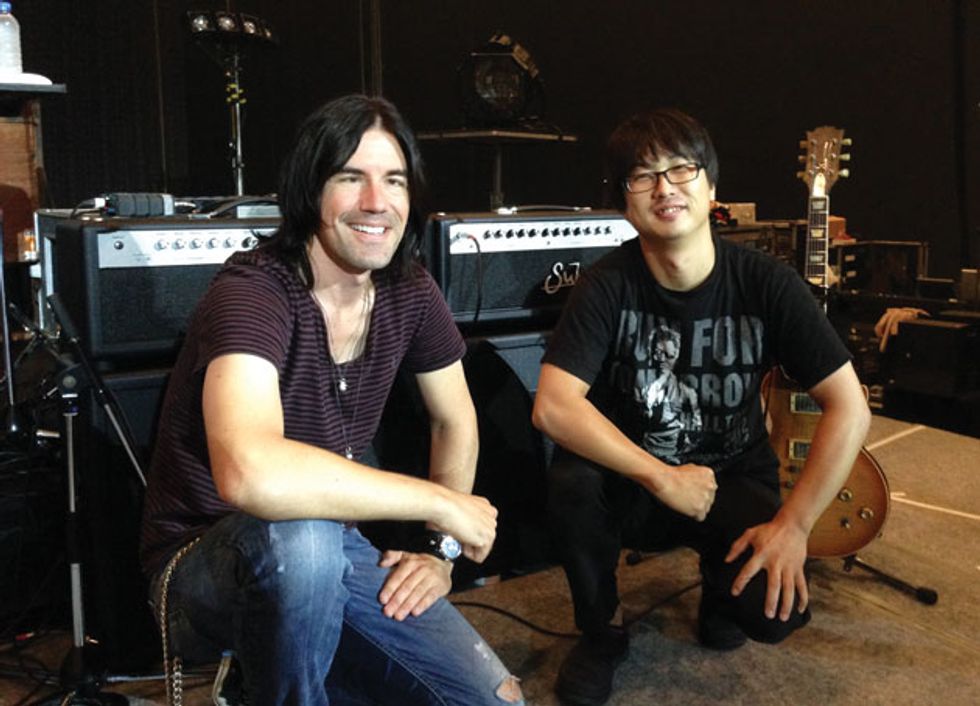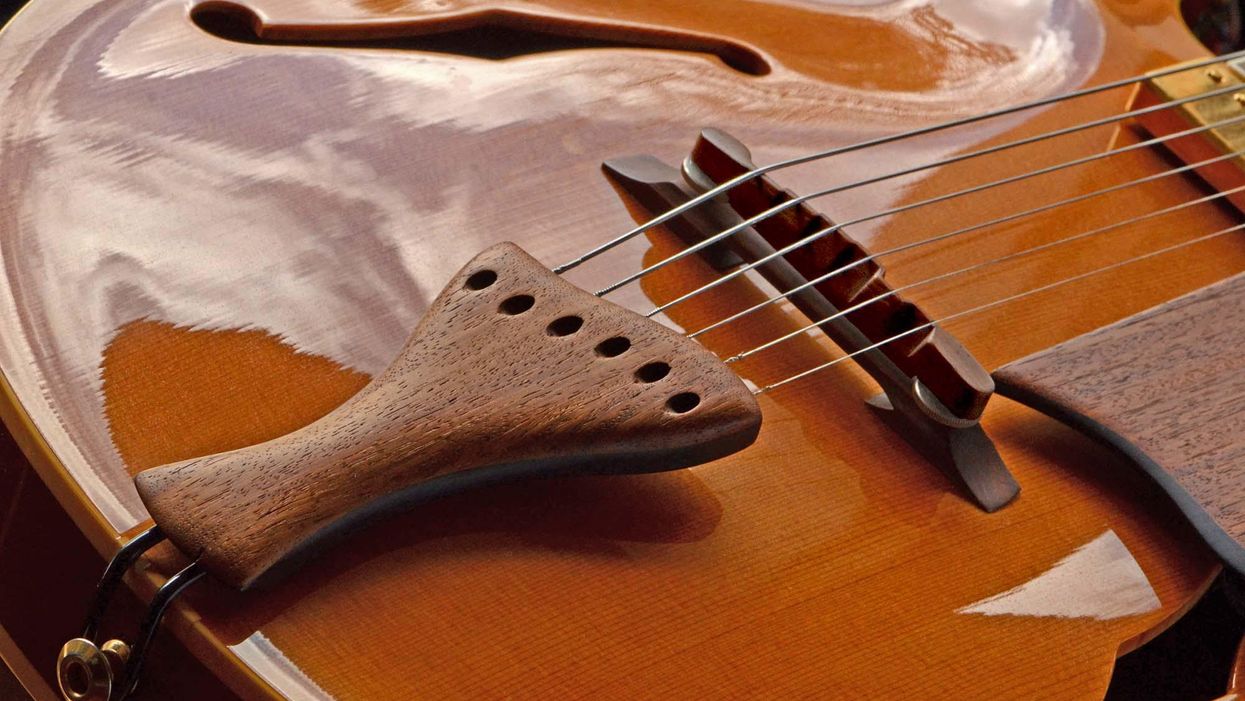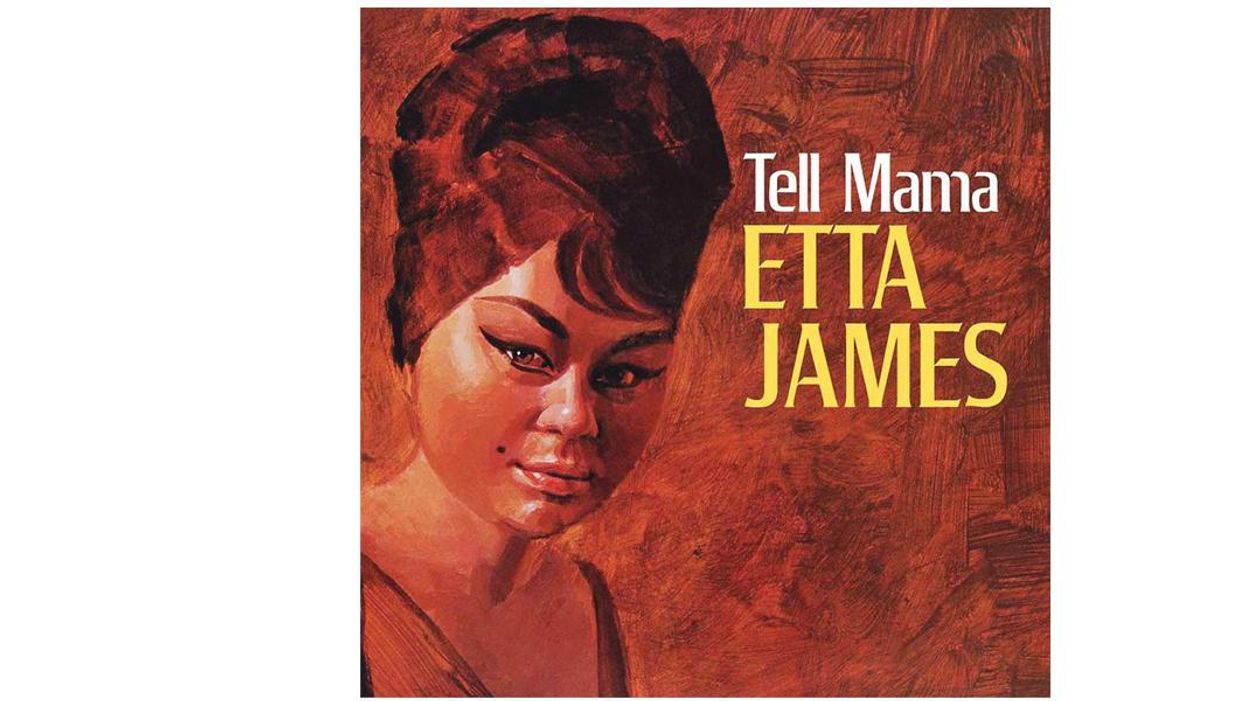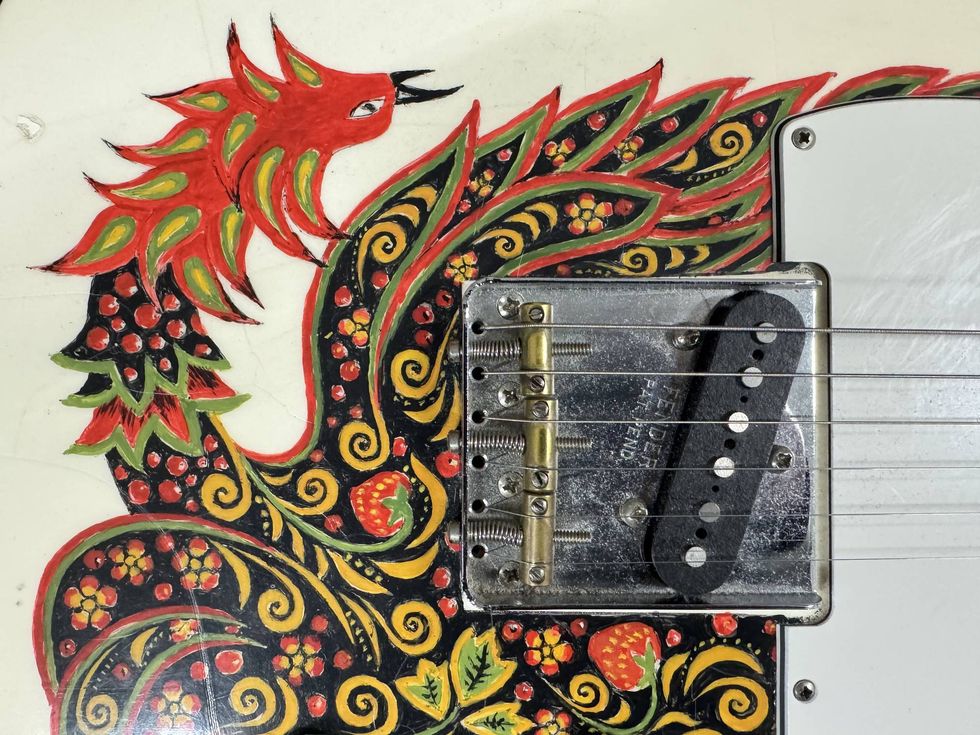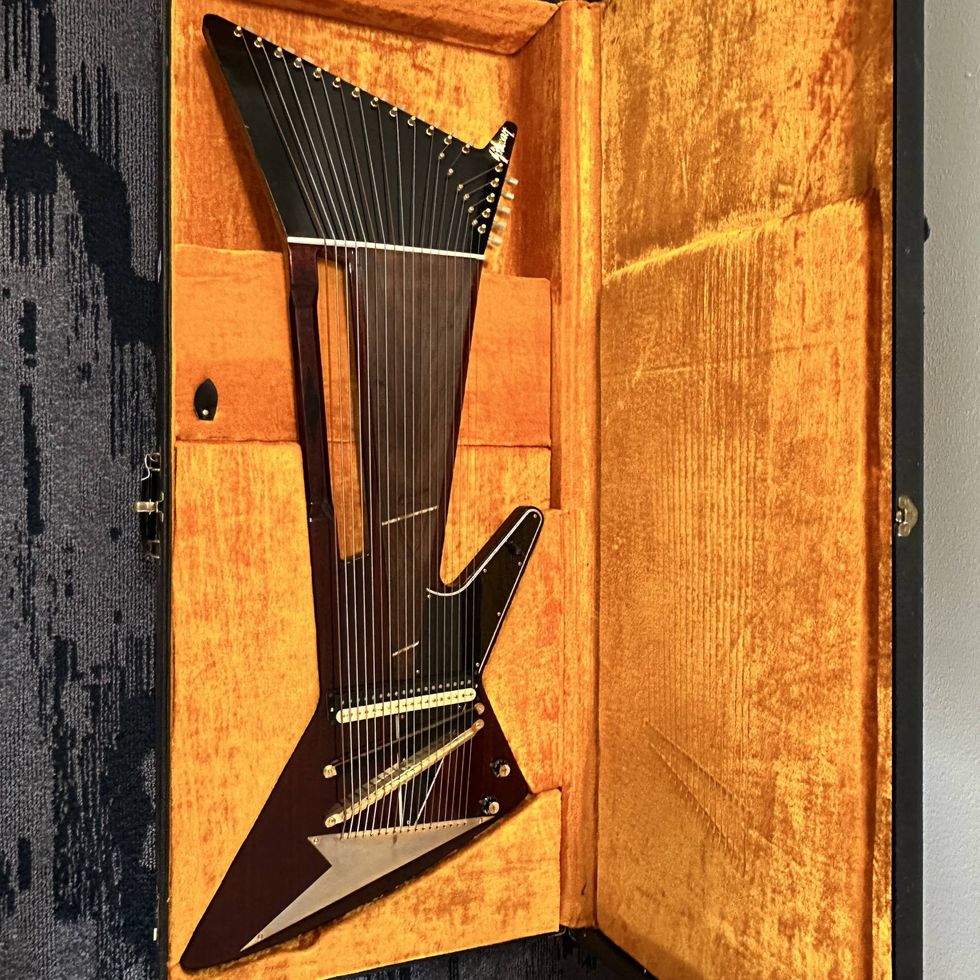Here’s a recent pic of me with my tech, Shuhei Fujita. Whether you’re touring as a musician, tech, or in management, giving 100 percent with a positive attitude is infectious.
I’m currently in Japan and three weeks into rehearsals for a tour with legendary Japanese rock artist Tsuyoshi Nagabuchi, and I’ve been working hard and having a great time. I’ve been to Japan before, so I was already familiar with the culture and work ethic here, but this is my first time working on a tour with a Japanese artist. One thing that’s really struck me is that when people do something here—whatever it is—they are 100 percent all in. They take it to the wall. I really admire the dedication and effort the Japanese people put into everything—from their work, to their style and fashion, to their pastimes.
Something I’ve noticed over the years—no matter what the work situation—is that the overall vibe of an organization tends to come from the top down. If the boss is hardworking and dedicated, the employees tend to follow suit. JS Technologies, Inc. (the company that produces Suhr guitars and amps) is a great example. My good friend John Suhr is relentlessly dedicated to making innovative and top-quality guitars, pedals, and amplifiers. He expects his employees to give their all, and as a result, the company continues to grow and become more successful each year. When you see your boss working hard, I believe it makes you want to rise to the occasion and deliver your best.
The Nagabuchi tour is also a perfect example of this. Tsuyoshi Nagabuchi gives his all and treats every rehearsal like a full performance. The gig is very high-energy and performance-oriented, so it’s incredibly physically and mentally demanding. Still, every single person involved brings his or her “A game”—be it the musicians, the crew, people in management, etc. Nobody is jaded and nobody is phoning it in.
In stark contrast, I’ve worked on a few tours in the past with U.S.-based artists where band and crew morale has sometimes been low and the work ethic substandard. Bad habits, laziness, and poor attitudes can spread like a cancer through an organization. And before you know it, quality can slide, everyone is complaining and grumpy, and you might start to question what you’re doing.
I remember one tour where the travel was brutal and the pay was low. Everyone was constantly complaining and even threatening to quit mid-tour. The keyboardist eventually pointed out that any of us could walk anytime, but that we should all stop with the idle threats and either quit, or band together, suck it up, and figure out how to make things as good as possible under adverse circumstances. You owe it to your audience to give them a great show, and it’s hard to do that if everyone’s in a bad mood all the time.
It’s so much more rewarding and fun to work in an environment where everyone is in it to win it. It sounds simple, but you have to make the choice to not be a complainer. Don’t forget that you agreed to your salary, agreed to take the gig, and agreed to do the work. And if you’re playing music for a living, you are one of the privileged few who have discovered one of the main keys to success: Do what you love, and the rest will follow. Even when things are tough—give off good energy and you’ll most likely find yourself getting better gigs before too long.
On any tour, the road crew is the backbone that can make or break each and every show. Having a hardworking and dedicated crew is worth its weight in gold since you know someone has your back onstage at all times.
The Nagabuchi crew is unlike any crew I’ve ever encountered because they are literally part of the show. They participate by cheering and fist pumping during rehearsals and performances, and they all watch Tsuyoshi like a hawk for cues since he frequently likes to do breakdowns and alternate endings. When they see one of his cues, they all cue the band members in unison so everyone is on the same page. The energy of the whole band and crew is cyclical, and you can’t help but get caught up in it.
My tech Shuhei Fujita is proving to be one of the best I’ve ever worked with despite the fact he speaks very little English and is quite young. He took it upon himself to learn how to program my Musicom Lab EFX MkIII switcher, and then offered to reprogram all my patches for the Nagabuchi set so they would run in order starting from the first song of the show—not an easy task.
Shuhei’s dedication and pleasant demeanor serve as constant reminders to me that I need to do my absolute best at all times, and I constantly let him know how much I appreciate his hard work. Basic respect, expressing gratitude, and maybe a simple but nice gift at the end of a tour are all great ways to let your techs and crew know that you appreciate their efforts.
Until next month: Stay positive, work hard, and I wish you good tone!


